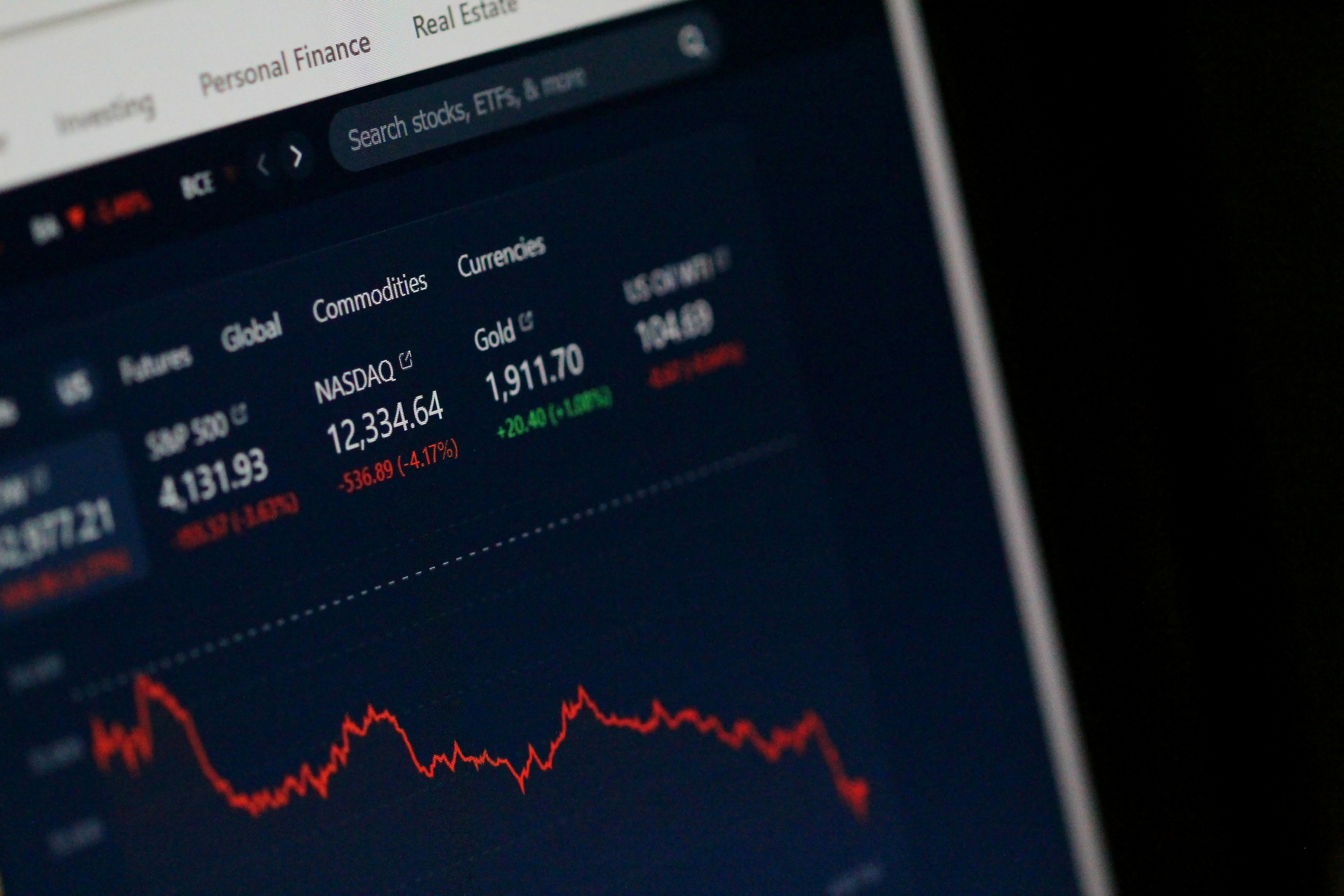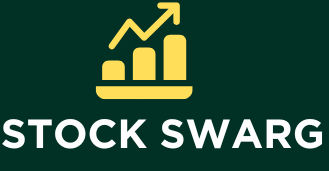
Introduction to Recession and Economic Indicators
A recession is commonly understood as a significant decline in economic activity across the economy, lasting more than a few months. Economists typically identify a recession through key indicators such as a drop in Gross Domestic Product (GDP), increased unemployment rates, and a decline in consumer spending. These criteria help to determine the health of the economy and offer insights into its future trajectory.
The most widely recognized definition of a recession is two consecutive quarters of negative GDP growth. GDP measures the total value of all goods and services produced within a country, providing a comprehensive lens through which to evaluate economic performance. A sustained decrease in GDP indicates not only a contraction in economic output but also reflects diminished overall demand. It is a crucial indicator that points toward potential economic hardship.
Another critical element in gauging the likelihood of a recession is the unemployment rate, which measures the percentage of the labor force that is unemployed and actively seeking work. Rising unemployment suggests that businesses are struggling, leading to layoffs and hiring freezes. This scenario often results in reduced consumer confidence and spending, creating a feedback loop that exacerbates the economic downturn.
Consumer spending is also a vital indicator. As households tend to account for a significant portion of economic activity, a decline in consumer expenditure typically signifies reduced confidence in the economy and future prospects. Economists closely monitor consumer sentiment indices and retail sales data as part of their analytical toolbox for predicting recessionary trends.
Understanding these economic indicators is essential for both policymakers and individuals alike. By accurately interpreting changes in GDP, unemployment, and consumer spending, stakeholders can formulate informed strategies to navigate potential economic challenges and mitigate the consequences of an impending recession.
Current Economic Landscape in the U.S.
The current state of the U.S. economy is a complex tapestry woven from numerous economic indicators, each painting a distinct picture of its health. Key factors such as inflation rates, employment statistics, and consumer confidence levels serve as important gauges for evaluating economic performance. As of October 2023, inflation remains a significant concern for policymakers and consumers alike. The Consumer Price Index (CPI) indicates that inflation, while slightly easing compared to previous highs, continues to exert pressure on household budgets, substantially impacting purchasing power.
Employment statistics reveal another layer of the economic landscape. The unemployment rate has remained relatively low, indicating a robust job market. However, job creation has shown inconsistencies across various sectors. For instance, technology and renewable energy sectors have thrived, while traditional manufacturing has experienced stagnation. This dichotomy raises questions about the sustainability of employment growth in the face of potential economic slowdowns. Moreover, wage growth has not kept pace with inflation, further complicating the picture for American households.
Consumer confidence levels, derived from surveys measuring public sentiment about personal finances and overall economic conditions, provide insight into future spending behaviors. Recent data suggest a decline in consumer confidence, reflecting concerns over inflation, high interest rates, and geopolitical tensions. These factors contribute to a cautious consumer outlook, often indicative of an upcoming economic downturn. Furthermore, when comparing the current situation with previous economic cycles, we observe similarities in inflationary pressures and consumer sentiment reminiscent of past recessions. Nevertheless, certain strengths, such as low unemployment and advancements in technology, indicate resilience in the U.S. economy, although the long-term outlook remains uncertain.
Historical Perspectives on U.S. Recessions
The economic history of the United States is marked by periodic recessions, each influenced by specific factors that give context to the broader economic landscape. By examining past downturns, we can glean vital insights that may help predict future economic conditions. The most notable recessions include the Great Depression of the 1930s and the more recent Great Recession of 2007-2009.
The Great Depression, which lasted from 1929 to the late 1930s, was primarily sparked by a stock market crash and subsequent bank failures, leading to widespread unemployment and economic stagnation. This catastrophic downturn persisted for nearly a decade, during which unemployment rates soared to approximately 25%. Recovery was not only gradual but also marked by significant shifts in economic policy, most notably the New Deal introduced by President Franklin D. Roosevelt. This period illustrated how structural reforms and government interventions were essential for economic recovery.
Fast forward to the Great Recession, which was triggered by the collapse of the housing market and risky lending practices in the financial sector. This recession began in December 2007 and officially ended in June 2009, although its effects lingered for several years. Unemployment peaked at just over 10%, and the recovery was further complicated by fiscal austerity measures and slow growth in consumer spending. This period highlighted the interconnectedness of global economies and raised questions regarding regulatory frameworks and their role in mitigating economic downturns.
The historical patterns of U.S. recessions emphasize that each downturn is unique, shaped by its causes, duration, and recovery processes. Understanding these patterns can serve to inform future economic analyses and better equip policymakers to address upcoming challenges. By evaluating past economic crises and responses, we can foster a more robust economic resilience moving forward.
Expert Opinions and Economic Forecasts
As the debate surrounding the potential for a future U.S. recession intensifies, economists and financial analysts offer diverse perspectives based on varying methodologies and assumptions. Notably, some experts argue that economic indicators such as GDP growth and unemployment rates present a robust outlook, suggesting that a recession may not be imminent. They point to the resilience of the labor market, with unemployment remaining at historic lows, as indicative of sustained economic health.
Conversely, other experts express concern over the rising inflation rates and the Federal Reserve’s aggressive monetary tightening policies. They argue that the combination of higher interest rates and diminishing consumer spending power could trigger a downturn. Renowned economist Jane Doe highlights that while the labor market appears strong, rising prices in essential goods may erode disposable income, thereby impacting consumer confidence and spending in the long run.
Additionally, analysts emphasize the role of global economic factors, including geopolitical tensions and international trade dynamics. These external pressures could lead to volatility in the U.S. economy, ultimately increasing the likelihood of a recession. For instance, John Smith, a leading economist, suggests that ongoing trade disputes and supply chain disruptions could exacerbate economic instability, particularly if other major economies falter.
Moreover, some predictions indicate a potential recession in the next two years, while others maintain a more optimistic outlook, expecting growth to continue albeit at a slower pace. This uncertainty underlines the complexity of accurately forecasting economic conditions, making it imperative to consider a variety of expert opinions. Despite differences in analysis, most agree that current market conditions warrant close monitoring, as an unexpected catalyst could shift the economic landscape dramatically.
Key Risks and Threats to Economic Stability
As the U.S. economy navigates its complex landscape, various key risks and threats loom that could potentially usher in a recession. Among these factors, geopolitical tensions emerge as a substantial concern. International conflicts, trade disputes, and the possibility of sanctions can create uncertainty that extends beyond borders, affecting investor confidence and financial markets. For instance, lingering tensions with major trading partners can lead to abrupt changes in trade policies, impacting the U.S. economy by restricting exports and raising import costs.
Another critical risk involves supply chain disruptions. The interconnectedness of global supply chains means that localized issues can have far-reaching consequences. Events such as natural disasters, pandemics, or logistical bottlenecks can hinder production and increase operational costs for businesses. The COVID-19 pandemic illuminated the fragility of supply chains, highlighting how quickly disruptions can ripple through industries and erode economic stability. Maintaining resilient supply chains is vital to mitigate this risk, yet the global political landscape remains unpredictable.
Changes in fiscal or monetary policy also pose significant threats to economic stability. The Federal Reserve’s interest rate decisions are particularly influential, as rate increases can curb consumer spending and investment, potentially leading the economy into a downturn. Similarly, shifts in government spending and taxation introduced through fiscal policy can alter economic dynamics, affecting growth rates and potentially precipitating a recession. Policymakers must balance their strategies carefully, as abrupt changes may trigger adverse effects in an already tenuous economic environment.
Understanding the interplay among these risks is essential for anticipating shifts in the economy. Awareness of geopolitical tensions, supply chain vulnerabilities, and policy changes will allow stakeholders to better navigate this uncertain terrain and develop strategies to preserve economic stability.
The Role of Government and Federal Reserve Policies
The economic landscape of the United States is significantly influenced by government fiscal policies and the monetary policies of the Federal Reserve. Together, these entities shape the economic environment, affecting inflation, employment rates, and overall economic growth. In recent years, particularly in response to the economic challenges spurred by the COVID-19 pandemic, policy decisions have drawn considerable attention as they aim to stabilize the economy.
Fiscal policy, which involves government spending and taxation, plays a vital role in regulating economic activity. When the government implements expansive fiscal measures, such as increased spending on infrastructure or direct financial aid to citizens, it can stimulate demand, subsequently promoting job creation and lowering unemployment rates. Conversely, contractionary fiscal policy, typically characterized by decreased spending or increased taxes, can lead to reduced economic activity and, in some instances, trigger a recession. The delicate balance between these two strategies is critical, especially in a time of uncertainty.
On the other hand, the Federal Reserve employs various monetary policy tools to manage liquidity within the economy. Through interest rate adjustments and quantitative easing, the Federal Reserve aims to control inflation and encourage borrowing and investment. For example, lowering interest rates makes loans cheaper, incentivizing businesses and consumers to spend. In recent times, with inflation concerns rising, the Federal Reserve has initiated interest rate hikes to moderate economic overheating, signaling a complex interplay between maintaining growth and curbing inflation.
As these policies evolve, their effectiveness remains a topic of debate among economists and policymakers. Observing their outcomes relative to inflation, employment figures, and long-term economic growth will be crucial in determining whether the U.S. can navigate its way toward stability—or if it faces the impending threat of recession.
Potential Indicators of an Incoming Recession
The prospect of a recession often elicits considerable concern among economists, investors, and consumers alike. To gauge the likelihood of an impending downturn, several key indicators may provide valuable insights. Among these, the yield curve inversion has historically served as a significant predictor. In a typical economic environment, long-term interest rates exceed short-term rates, reflecting confidence in future growth. However, when short-term rates surpass long-term ones, this inversion often signals a lack of confidence, suggesting that a recession could be on the horizon.
Another critical factor to consider is the trend of rising interest rates. Central banks often employ this strategy to curb inflation by making borrowing more expensive. If interest rates rise too quickly or too high, businesses may cut back on expansion and investment plans, leading to reduced economic activity. The reaction of both consumers and businesses to these changing rates can serve as a litmus test for the overall economic climate. A significant slowdown in borrowing can indicate that consumers are becoming cautious, a behavior often linked to impending recessionary conditions.
Moreover, monitoring consumer spending provides another essential lens through which to assess the economy’s health. As consumer confidence dips, spending tends to retract, impacting businesses that rely heavily on consumer expenditures for growth. Prolonged reductions in spending can lead to higher unemployment rates as companies adjust to lower demand for goods and services. Such patterns, particularly when coupled with other indicators like the yield curve and interest rate changes, may be harbingers of a recession. In conclusion, recognizing and interpreting these possible signs can empower individuals and businesses to navigate the complexities of the economic landscape effectively.
Public Sentiment and Consumer Behavior
Public sentiment and consumer behavior are crucial indicators of economic health, often serving as precursors to a recession. When assessing the likelihood of an impending downturn, economists frequently examine consumer confidence indexes, which reflect households’ perceptions of current and future economic conditions. Surveys conducted by reputable organizations, such as the Conference Board and the University of Michigan, gauge how optimistic or pessimistic consumers feel about their financial situations and prospects. A significant decline in consumer confidence can lead to reduced spending, which is a critical driver of economic growth.
Consumer behavior, particularly spending patterns, further illustrates public sentiments regarding the economy. During periods of optimism, consumers tend to spend liberally on non-essential items, investing in retail goods, dining out, and travel experiences. Conversely, when sentiment shifts to pessimism, consumers often tighten their budgets, prioritizing essential expenditures and delaying or forgoing discretionary spending. This behavioral shift can trigger a chain reaction in the economy, leading to decreased business revenues, potential layoffs, and ultimately, a contraction in economic activities.
Moreover, trends in consumer spending are closely monitored as they can offer insights into broader economic conditions. For instance, if retailers report declining sales, it may reflect a lack of consumer confidence, potentially signaling an approaching recession. Seasonal adjustments in spending can be revealing as well; during critical periods such as holiday seasons, any noticeable decline in consumer expenditures may raise alarms about future economic stability. In this context, public sentiment and consumer behavior play a vital role in shaping economic forecasts, providing indirect signals that can indicate the potential for a recession.
Conclusion: What Lies Ahead for the U.S. Economy?
As we draw our analysis to a close, it is essential to reflect on the insights gathered from the preceding sections regarding the potential for a U.S. recession. The economic landscape is invariably influenced by numerous dynamics, including inflation rates, consumer confidence, labor market trends, and global economic conditions. Current forecasts suggest that while certain indicators point toward a possibility of recession, others paint a more optimistic picture of economic resilience.
The Federal Reserve’s monetary policy, particularly its interest rate adjustments, plays a pivotal role in shaping the economic outlook. As seen in recent trends, an increase in interest rates can cool down inflation but may inadvertently slow economic growth, inadvertently heightening the risk of recession. Such actions can trigger ripples across various sectors, affecting everything from investments to consumer spending. Consequently, businesses and households must remain vigilant and adaptive to these shifts in policy and market conditions.
Additionally, external factors, such as geopolitical tensions and global supply chain disruptions, can further exacerbate economic uncertainties. The interplay of these elements underscores the importance of monitoring developments closely. Therefore, it is prudent for individuals and businesses to prepare strategically for varying economic circumstances. This preparation may involve diversifying investments, enhancing financial literacy, or adopting prudent debt management practices, all of which can provide a buffer against economic downturns.
In conclusion, while the potential for a U.S. recession looms on the horizon, it is not an inevitability. Factors influencing this potential are multifaceted and ever-evolving. By staying informed and proactive, individuals and businesses can navigate the complexities of the economic landscape with greater assurance and resilience.


